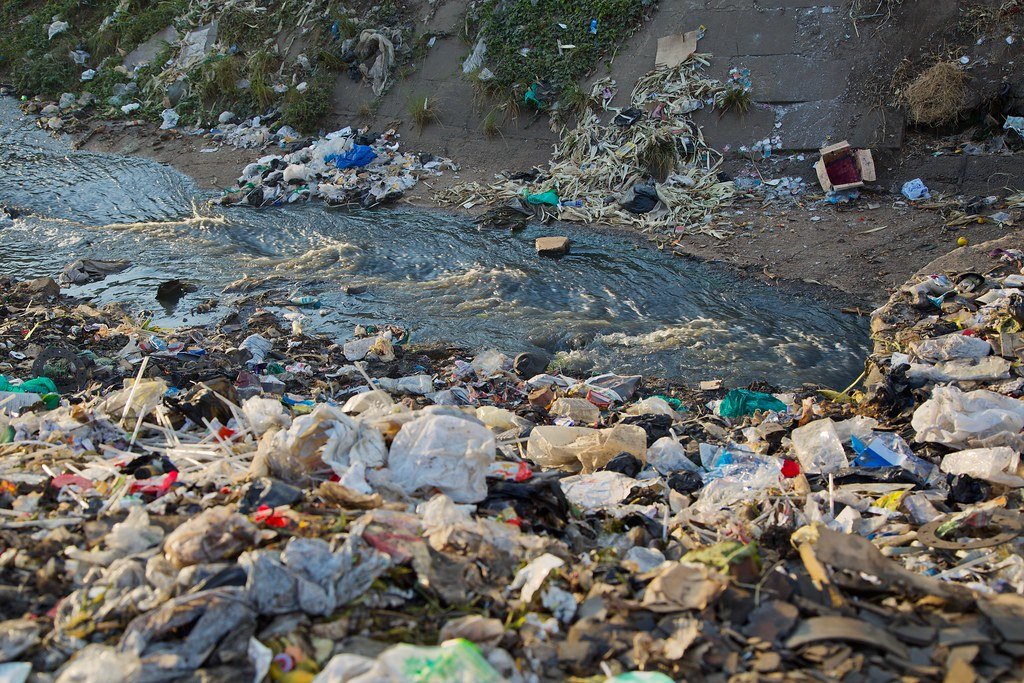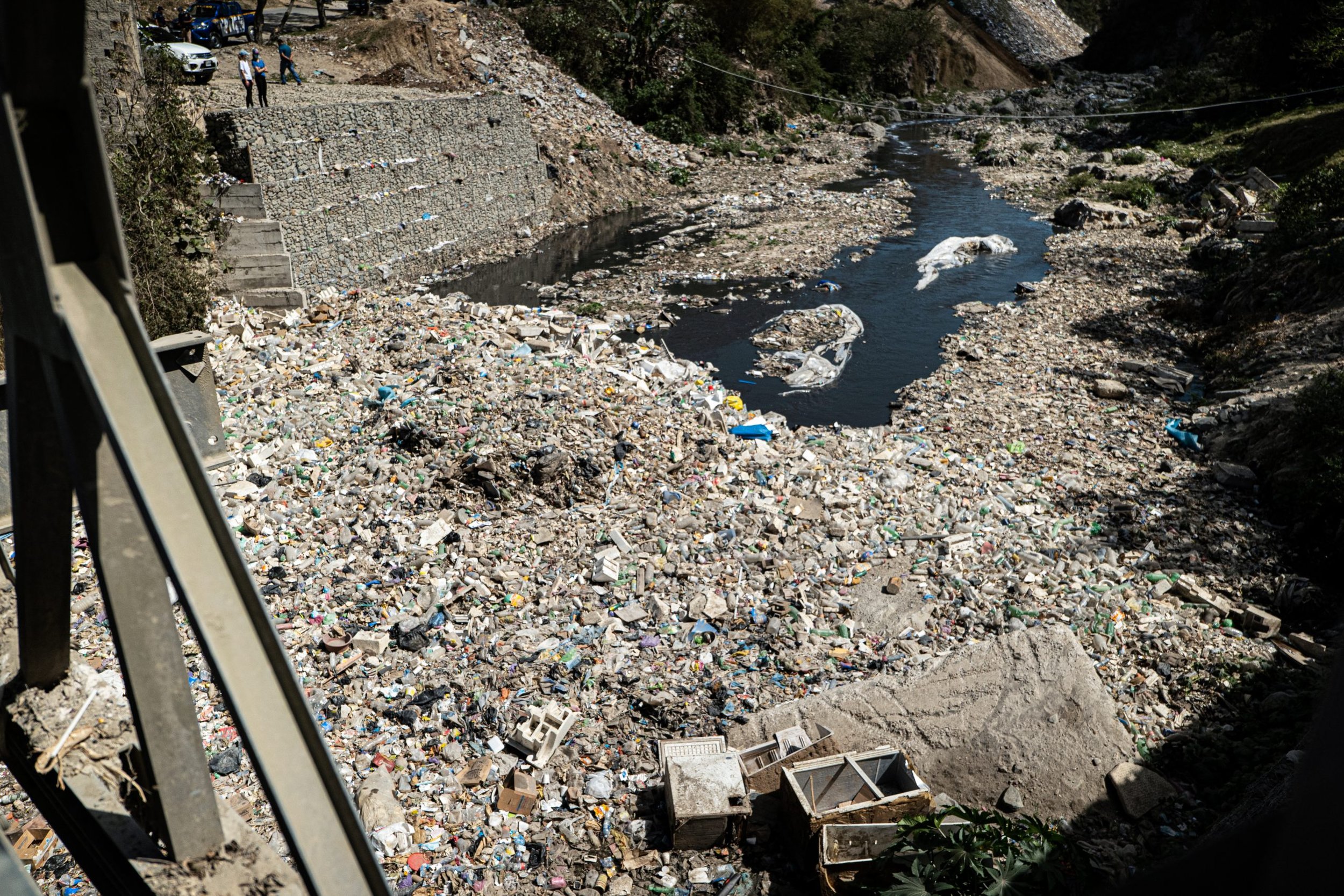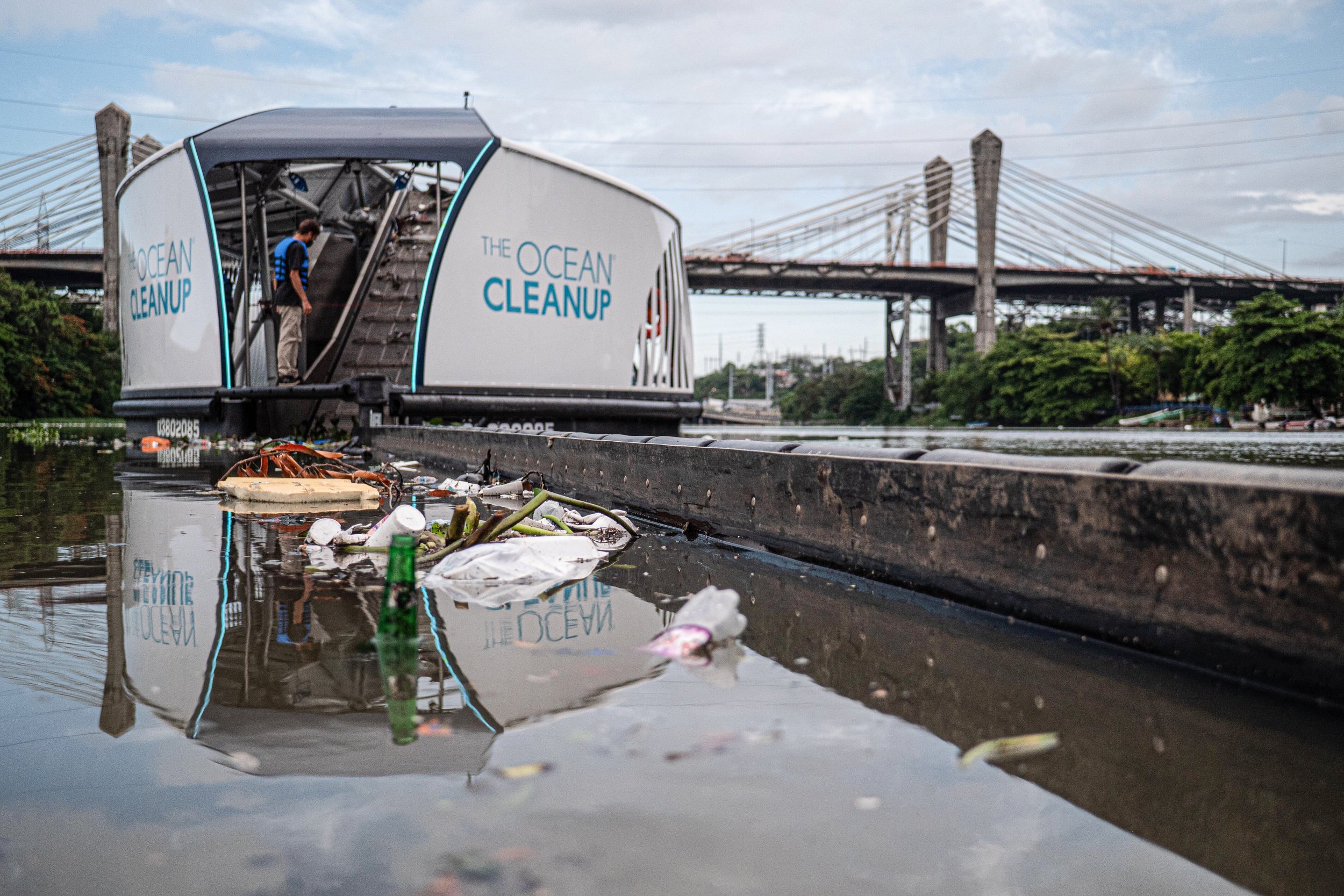ocean plastic: cleaning rivers
There are thousands of rivers on the planet, each making their way towards the ocean. As they do the rivers pick up debris, chemicals, pesticides, sediment and other pollutants, in particular as they pass through agricultural, industrial or urban areas. Millions of tonnes of plastic enter the ocean every year in this way.
While research into ocean plastic has been developing since the 2000s, studies into rivers as possible sources of this pollution have lagged behind. Only in recent years have rivers been clearly identified as the main culprits. Research from 2017 concluded that only 10 to 20 rivers were responsible for nearly 90% of all ocean plastic but in 2021 The Ocean Cleanup broadened this figure to 1,000 rivers which are thought to be responsible for nearly 80% of the plastic in the ocean after conducting surveys of over 1,600 rivers. Interestingly the results of this research show that the largest rivers are no longer necessarily the worst pollutants. On the contrary, many shorter rivers in urban environments outrank the great rivers of the world in terms of pollution. The 6,300 kilometre long Yangtze, for example, is one of the world's longest rivers crossing China and leading to the East China Sea. Ranked as a top polluter in 2017, the river has now ceded to the 25 km Pasig River which bisects the Philippine capital Manila, picking up waste from the 14 million people who live there and discharging it into Manila Bay and the South China Sea.
The Ocean Cleanup
The models run by The Ocean Cleanup looked at a number of factors, such as the location of the rivers and their proximity to the coast, the effect of weather patterns (where rainfall and wind can lead to larger amounts of plastic being carried into the rivers than in areas with dryer and less windy climates), the terrain along the river bank (paved urban areas provide a smoother path than the rough terrain of a forest) and the location of landfills and waste facilities in the vicinity of rivers (with those within a radius of 10 kilometres adding significantly to the probability of pollution). The length of the river was also classed as highly relevant: the further the plastic needs to travel, the less likely it is that it will make its way out into the ocean, usually it ends up instead on the river bank. Climate was a further important consideration: levels of river pollution in some countries mirror the patterns of rains and floods while other countries experience a more constant flow. Population density is also highlighted as a major factor, with 44 of the 50 largest polluting rivers found in densely populated areas in Asia.

The Ocean Cleanup

The Ocean Cleanup

The Ocean Cleanup

The Ocean Cleanup
With recognition of the involvement of a larger number of rivers the scale of the cleanup challenge has grown, complicated further by the individual nature of each and every river: location, climate and terrain dictate the parameters for cleanup solutions, what works for one river cannot necessarily be copied and implemented in the next.
This has led to the development of an array of cleanup technologies around the world. Some of these involve vessels which collect or concentrate debris, so-called skimmer vessels, which usually require a crew to guide the vessel and sort the waste carried onboard by a conveyor belt. Alternatively, vessels can be fitted with trash catchers consisting of a fine mesh filter net towed alongside or behind.
Other technologies use passive systems which rely on river currents to channel waste into devices like booms, traps or barriers. Booms are often a good solution for smaller rivers with weak currents and little traffic. They can be anchored to the river side and are designed to channel floating waste into a trap where materials are then removed with an excavator, conveyor, or a skimmer vessel. Rotational devices follow a similar process, channelling waste to one side of the river, into a collection point. River traps can also be a solution for quiet waters. Usually made of two arms stretching out into the water and leading to a collection point, the floating devices use the current to guide debris into the trap as it floats downriver.
One positive aspect of cleaning rivers (in direct contrast to the work on the open ocean) is that local partners are easier to find: rivers clearly fall under the jurisdiction of the States they run through, these States are directly responsible for them, and the general public is nearby and watching. What is often seen as the greatest problem for the ocean, the fact that it is out of sight and therefore easy to ignore, is turned on its head when it comes to rivers. Everyone can see the state of their local river, everyone can judge the work underway to clean or maintain it, and everyone can voice their concerns with their local government. As a consequence, cleanup operations on rivers around the world are plentiful, often run by local governments, sometimes with the involvement of international organizations, private corporations and NGOs. As with any cleanup operation, improving local waste facilities and developing community involvement are key elements in assuring the long-term success of a project. Many cleanup operations include an educational factor, by inspiring behavioural change the local community can go a long way to tackle the source of the problem.
Spotlight on The Ocean Cleanup
Running parallel to their oceans project cleaning up the GPGP, The Ocean Cleanup Rivers team unveiled The Interceptor in 2019, which is able to independently collect up to 50,000 kg of waste every day. The vessel consists of a barrier which guides waste flowing with the river current towards the opening of the Interceptor and onto a conveyor belt which carries it up onto the vessel and dumps it in one of six containers capable of carrying up to 50 m³ of waste. When the containers are full, sensors trigger an alert which is sent to the local operators so that they can collect and empty them, taking the plastic on to waste facilities for sorting and recycling. Interceptors are now operational in five States, the Dominican Republic, Indonesia, Malaysia, Thailand, the United States and Vietnam. Their progress can be tracked on The Ocean Cleanup Dashboard.
Spotlight on The Seacleaners
The Seacleaners have a fleet of vessels adapted to different areas and needs.
For coastal waters, the Manta uses a combination of waste-collecting conveyor belts to bring the waste on board, together with three collection systems with a span of 46 metres to pick up surface waste. These are supported by two smaller multi-purpose collection boats, named 'Mobulas', which can collect both microplastic and macroplastic waste from shallow and narrow areas, and two cranes, which can be used to pull out larger items of floating debris. Projections estimate that the Manta can collect between 1 and 3 tonnes of waste per hour, with the objective of collecting 5 to 10,000 tonnes per year. It can operate for up to 20 hours a day, 7 days a week, powered by solar panels and wind, as well as electricity generated via the onboard pyrolisis plant, which turns the waste into fuel.
The vessel is designed to host scientific research missions as it cleans, and educational events and conferences will be organized for the general public to coincide with its port visits.
The Mobula 8 is designed for deployment in rivers, canals, mangroves and calmer waters close to shore. The vessel is manned by a pilot and two sorters and can cover an area of 15,000 square metres an hour to a depth of 40 cm. A suction device installed at the front of the Manta enables the collection of up to 8 cubic metres of macroplastic and microplastic as well as up to 600 litres of contaminated water (for example from an oil spill). Waste is carried up onto the vessel on a conveyor belt, sorted by the two operators and then taken to a local waste facility for recycling. The vessel, which is now being deployed in Bali in conjunction with one of the leading waste recycling trade associations in Indonesia, is introduced here:
Spotlight on One Earth-One Ocean eV
The environmental organization One Earth-One Ocean eV (oeoe) has developed a fleet of vessels which, after tests in the Baltic Sea, have been put into operation around the world. The solar-powered cleaning catamaran Circular Explorer is being deployed in Manila while its sister ship SeeKuh is working in Rio, and a number of smaller SeeHamsters are working on the Nile in Egypt, around Bekasi on Java and in particular along the Mekong River and its tributaries in Cambodia. Parallel to the cleanups, oeoe runs educational projects, working with local communities and waste management organizations.
Spotlight on Mr. Trash Wheel
Mr. Trash Wheel is a semi-autonomous trash interceptor which can be deployed at the mouth of a river or used in ports. River currents transport waste into the two containment booms, from there the rake lifts waste out of the water and onto the conveyor belt using a blend of solar and hydro power. The waste is stored in dumpsters placed on a separate floating barge which can be towed away when full and replaced with an empty one.
Spotlight on the River Cleaner
The River Cleaner created by RiverRecycle uses a series of rotating discs positioned diagonally across the river and anchored to the riverbed, catching both waste and oil and propelling it towards the bank where it is lifted out of the water with a collection wheel and captured in a storage area. The autonomous system is designed to collect waste floating on the surface or down to a depth of 1 metre. Due to its modular nature it can be scaled up to fit the size of any river.
Spotlight on the Sungai Watch
Sungai Watch Indonesia has deployed over 100 barriers in just some of the 372 rivers on Bali using different types of technologies from booms and nets to cages and blocks. In just 2021 alone, 333 tonnes of waste and 393 tonnes of organics were removed from rivers on Bali during 122 cleanups.
The Sungai Watch team is remarkable for the fact that they not only clean the rivers but they also assess the waste collected. The 55 members of its river warriors team monitor the barriers on a daily basis, collecting the accumulated waste, sorting and logging it for their brand audit and then preparing it for recycling. This hands-on approach provides much-needed information about the type of plastics being found, their location and path, all of which should help guide the local strategy to prevent waste reaching the rivers in the first place.
In addition to their twice-weekly public cleanups, the organization has an emergency hotline and can organize cleanups at illegal dumps and along riverbanks as needed. Their aim is to clean every river in Indonesia by 2025. Educational projects organized by the team round off their work.
Spotlight on the Clean Currents Coalition
In 2019, the Benioff Ocean Initiative put out a call for proposals for projects using innovative designs and strategies mixing engineering and science to eliminate the flow of plastic waste into rivers and the ocean. They selected 9 projects with which they established the Clean Currents Coalition. Each of the teams is working in one community on one river system but the idea is that through collaboration, knowledge-sharing, and a common goal, their successes can be adapted and then deployed to river communities around the world.
According to their website, the projects are using experimentation and data collection and at the same time catalysing societal and governmental shifts in thinking about plastic consumption and waste management systems through outreach and education. The projects, which are introduced here, involve the Portoviejo river in Ecuador, the Assi river in India, the Citarum river in Indonesia, Kingston harbour in Jamaica (with The Ocean Cleanup's Interceptor), the Athi river in Kenya, Tijuana river in Mexico, the Juan Díaz river in Panama (using Mr. Trash Wheel), the Lat Phrao canal in Thailand and the Song Hong in Vietnam, and use a variety of booms and waste capture systems. Regular contact and annual seminars provide the coalition members with the opportunity to share their findings and results. The coalition introduces its work here:

